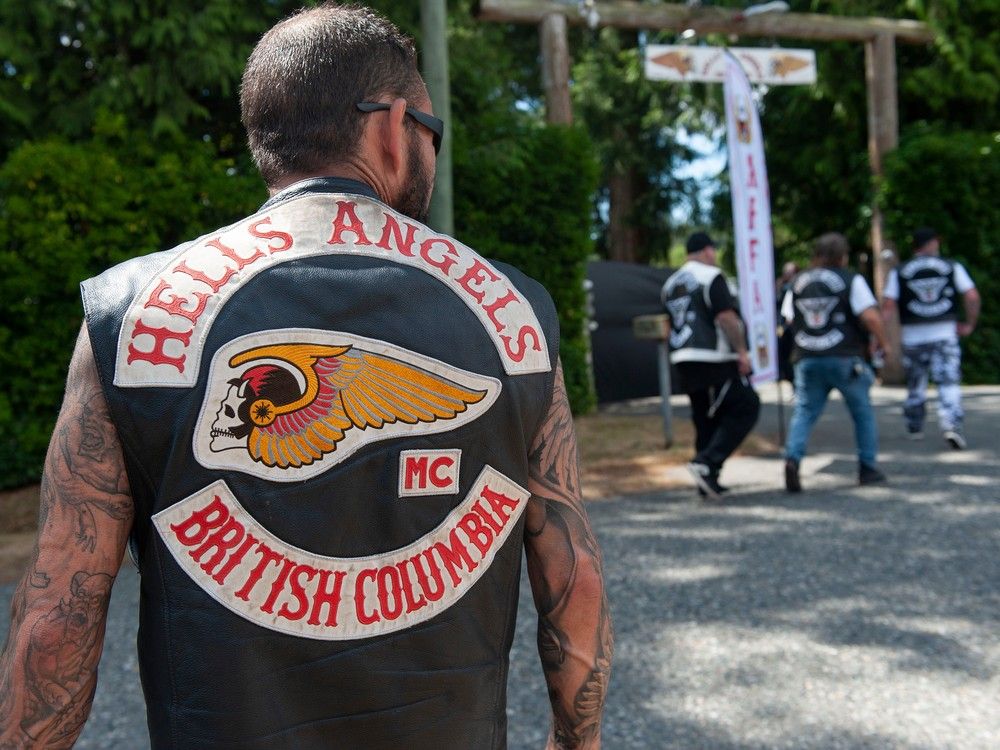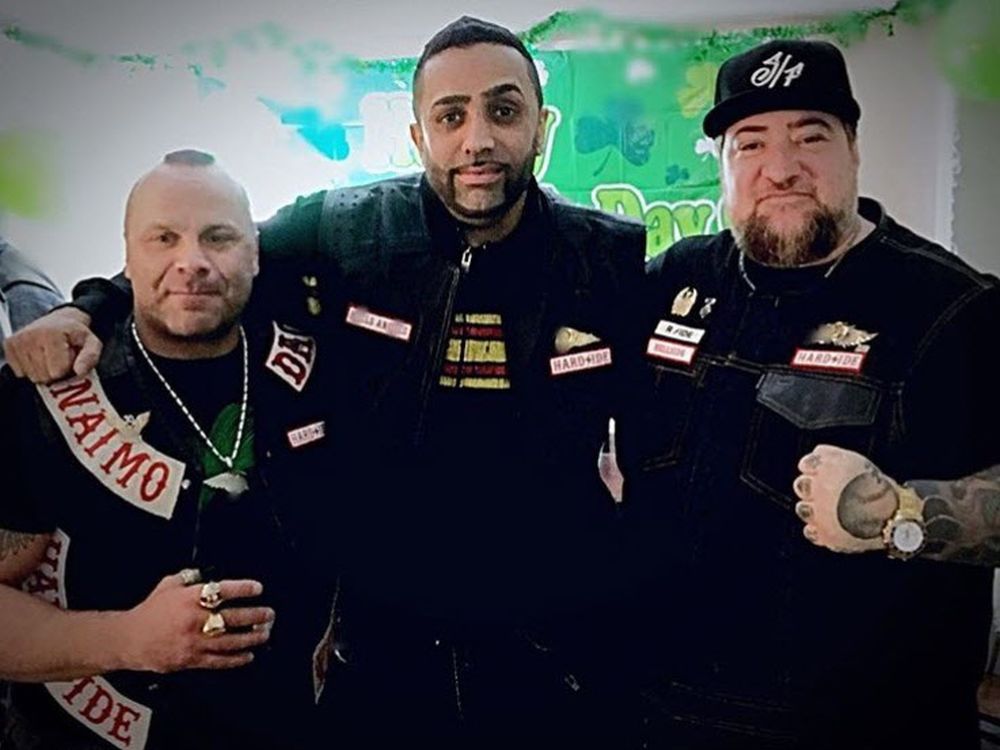Who are the Black Hells Angels, and what has cemented their place in the annals of counterculture? They are far more than just a motorcycle club; they are a complex phenomenon whose history, lifestyle, and impact continue to resonate within society, sparking both fascination and controversy.
Founded in the post-World War II era, the Hells Angels Motorcycle Club, which spawned the Black Hells Angels as a distinct faction, has become one of the most recognizable motorcycle clubs in the world. This subgroup is often associated with a more aggressive and rebellious reputation, standing in stark contrast to the mainstream image of motorcycle riders. Understanding the members of this faction requires a careful exploration of their values, beliefs, and the societal context in which they operate. This piece aims to provide an in-depth analysis of the Black Hells Angels members, delving into their history, notable figures, and the cultural impact they have had over the years. The goal is to present factual information from credible sources, adhering to the principles of expertise, authority, and trustworthiness.
Table of Contents
- 1. History of the Black Hells Angels
- 2. Notable Members and Their Biographies
- 3. The Lifestyle of Black Hells Angels Members
- 4. Cultural Impact of the Black Hells Angels
- 5. Myths and Misconceptions
- 6. Law Enforcement and the Black Hells Angels
- 7. The Black Hells Angels Today
1. History of the Black Hells Angels
The story of the Black Hells Angels is interwoven with the origin story of the Hells Angels Motorcycle Club itself. The club was established in 1948 in California, initially serving as a means for motorcycle enthusiasts to connect over their shared passion for riding. Over the years, the club expanded, establishing various chapters throughout the United States and internationally. The Black Hells Angels emerged as a distinct faction within the club during the 1960s and 1970s, a period marked by social upheaval and the rise of the counterculture movement. Members of this subgroup often adopted a more aggressive approach to life, earning notoriety for their involvement in criminal activities, which included drug trafficking and organized crime. As the Black Hells Angels gained prominence, they became symbols of rebellion against mainstream society. Their visual identity, characterized by black leather jackets emblazoned with the club's emblem, helped foster a strong sense of belonging among members while simultaneously cultivating a fearsome reputation in the eyes of outsiders.
2. Notable Members and Their Biographies
Understanding the Black Hells Angels requires an examination of some of its key members. The following table summarizes information on a few significant figures within this faction.
| Name | Position | Years Active | Notable Achievements |
|---|---|---|---|
| Sonny Barger | Founder of the Oakland Chapter | 1957 - Present | Authored several books about motorcycle culture |
| Ralph "Sonny" Barger | Influential Leader | 1960s - 2020 | Prominent figure in the motorcycle club scene |
| George "The Greek" Kourounis | Member | 1970s - Present | Known for his involvement in various criminal enterprises |
Source: Wikipedia - Hells Angels
2.1 Sonny Barger
Sonny Barger is arguably the most recognizable figure associated with the Hells Angels. Born in 1938, Barger was a pivotal member of the Oakland chapter, playing a crucial role in establishing the club's identity and influence. He is also the author of several books, including his autobiography, which provides valuable insight into the life of a Hells Angel and the culture that surrounds motorcycle clubs.
- Jack Doherty From Teen To Youtube Star Beyond
- Jack Blacks Height Weight How It Shaped His Career Life
2.2 Ralph "Sonny" Barger
Ralph "Sonny" Barger significantly shaped the Hells Angels' reputation, particularly that of the Black Hells Angels. His leadership and charisma drew in numerous members, and his influence went beyond the motorcycle community and into popular culture, establishing him as a symbol of rebelliousness.
3. The Lifestyle of Black Hells Angels Members
The lifestyle of Black Hells Angels members is defined by a strong sense of brotherhood, unyielding loyalty, and an unwavering commitment to the club's values. Members often adhere to a strict code, prioritizing respect, discipline, and camaraderie. The core elements of their lifestyle include:
- Brotherhood: Members view each other as family, often addressing each other as "brothers." This bond is essential for maintaining loyalty within the group.
- Riding Culture: Motorcycle riding is central to their identity, with members participating in long rides, rallies, and events that cultivate a sense of community and shared purpose.
- Distinctive Attire: Members are known for wearing black leather jackets adorned with patches that signify their affiliation with the Hells Angels and other personal accomplishments.
- Social Gatherings: Social events, parties, and gatherings are common occurrences, allowing members to strengthen their bonds and share their common interests.
4. Cultural Impact of the Black Hells Angels
The Black Hells Angels have left an enduring mark on popular culture, influencing various forms of media, including films, books, and music. Their rebellious image has been romanticized in numerous films, leading to a public fascination with the motorcycle lifestyle. Furthermore, the club's portrayal in documentaries and television shows has contributed to the mystique surrounding motorcycle gangs, often blurring the lines between reality and fiction. This cultural impact has elicited both admiration and criticism, shaping public perceptions of motorcycle clubs.
5. Myths and Misconceptions
Despite their notorious reputation, numerous myths and misconceptions surround the Black Hells Angels. It's crucial to address some of these:
- All members are criminals: While some members may have criminal backgrounds, it's inaccurate to assume that all are involved in illegal activities. Many are simply passionate motorcycle enthusiasts.
- Women are not welcome: While the club is predominantly male, women have played significant roles within the Hells Angels, both as members and supporters, challenging traditional gender roles in motorcycle culture.
- They are a violent gang: While violence has been associated with some incidents involving the Hells Angels, many members prioritize brotherhood and camaraderie over aggression.
6. Law Enforcement and the Black Hells Angels
The relationship between law enforcement and the Black Hells Angels has been marked by considerable tension. Authorities often view motorcycle clubs as criminal organizations, which leads to increased scrutiny and investigations. Numerous high-profile arrests and raids have targeted members, further complicating their public image. Nevertheless, the Black Hells Angels have consistently fought back against these perceptions, asserting their rights to assemble and ride freely. This ongoing conflict has fueled a narrative of rebellion, reinforcing their status as icons of counterculture.
7. The Black Hells Angels Today
Today, the Black Hells Angels continue to thrive, with chapters spread across the globe. Despite facing challenges from law enforcement and societal stigma, their membership remains strong. The club has adapted to the changing times while staying true to its core values of brotherhood and loyalty. The influence of the Black Hells Angels can be seen in the resurgence of interest in motorcycle culture, with new generations of riders drawn to the allure of freedom and rebellion that the club represents.
- Unveiling The Story Of Andrew Seow From Tv Star To Philanthropist
- Danielle Gray Motocrosss Rising Star See Her Journey


